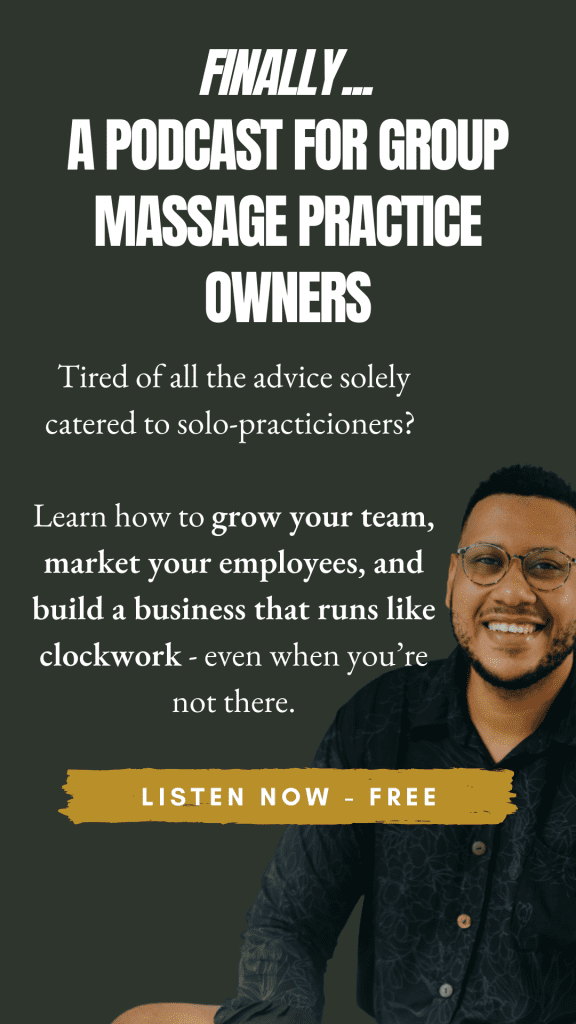In the fast-paced, high-stress world we live in, relaxation massages have become increasingly popular. However, standing out in a competitive market requires a strategic marketing approach that focuses on building trust, showcasing expertise, and creating a memorable client experience.
In this article, we will explore how to market relaxation massage services effectively, whether you’re a solo practitioner or part of a larger wellness center.
1. Establish an Online Presence
Create a Dedicated Website
A professional, user-friendly website is the cornerstone of your online marketing strategy. It serves as a virtual business card and the first impression for potential clients.
- Clear Branding: Use calming colors and images that reflect the essence of relaxation. Your site should instantly convey the peaceful atmosphere clients can expect.
- Service Descriptions: Provide detailed information about your relaxation massage offerings, including the techniques you use, session durations, and pricing.
- Easy Booking: Incorporate a straightforward online booking system or direct contact form. The fewer clicks it takes to schedule an appointment, the better your conversion rate will be.
Optimize for Search Engines (SEO)
When people look for “how to market relaxation massage” or more importantly, “relaxation massage near me,” you want your site to appear among the first results.
- Keyword Placement: Naturally integrate phrases like “relaxation massage,” “stress relief,” and “wellness services” into your headers, meta tags, and content.
- Local SEO: List your business on Google Business Profile and ensure your name, address, and phone number (NAP) are consistent across all online directories.
- Quality Content: Publish blog posts about topics such as self-care tips, stress reduction techniques, and the benefits of regular massages. This not only helps with SEO but also positions you as an industry expert.
2. Leverage Social Media Platforms
Choose the Right Platforms
Not all social media channels will yield the same results. Focus on platforms where your target audience is most active.
- Facebook: A business page on Facebook can help you share updates, post event invitations, and interact with clients through direct messages.
- Instagram: Perfect for sharing beautiful images of your massage space, calming color palettes, and short videos demonstrating relaxation techniques.
- TikTok or YouTube: Short video platforms allow you to create mini tutorials on self-massage or stretching to reduce stress, showcasing your expertise.
Engage and Interact
Simply having a social media account isn’t enough. Engage consistently to build relationships and trust.
- Regular Posting Schedule: Plan to post at least 2–3 times per week. Mix up content—include tips, promotions, behind-the-scenes peeks, and client testimonials.
- Respond Promptly: Answer questions and comments quickly. Prompt interaction shows you value your audience and are responsive to their needs.
- User-Generated Content: Encourage satisfied clients to share photos or short reviews on social media. Reposting their content with permission can be a powerful testament to your services.
3. Craft Compelling Promotions and Offers
Introductory Packages
Many potential clients may hesitate to book a full-priced relaxation massage if they’re new to your services. Incentivize them to try:
- First-Time Discounts: Offer a percentage off or a special rate for first-time clients to encourage them to book an appointment.
- Bundle Deals: Combine multiple sessions or include add-on services (e.g., aromatherapy, hot stones) at a discounted package rate.
Loyalty and Referral Programs
Turning one-time clients into regulars is key to growing your business sustainably.
- Loyalty Cards: Offer a free or discounted session after a set number of massages. This gives clients a tangible goal to work toward.
- Referral Incentives: Provide rewards to clients who refer friends or family. Word-of-mouth is one of the most effective ways to market relaxation massage services.
4. Partner with Complementary Businesses
Local Collaboration
Working with businesses that share a similar target audience can boost your exposure:
- Gyms and Yoga Studios: Offer special deals for gym or yoga members, and, in return, they can promote your services to their clientele.
- Wellness Centers and Spas: Partner on special events or create bundled wellness packages, offering a more comprehensive service to clients looking to de-stress.
- Corporate Events: Set up a relaxation booth at corporate health fairs to offer brief chair massages or demonstrations. This can open the door to corporate wellness opportunities.
Community Involvement
Building trust in your community can significantly enhance your reputation:
- Workshops and Seminars: Host free or low-cost workshops on stress management, stretching techniques, or holistic health. This is a great way to showcase your expertise and build relationships.
- Charity Involvement: Donate gift certificates to local fundraisers or charities. Supporting community causes reflects positively on your brand and helps you reach a wider audience.
5. Build an Email Marketing Strategy
Grow Your Email List
Email marketing is a direct way to stay connected with both current and potential clients.
- Website Opt-In Forms: Offer a downloadable relaxation guide or a small discount in exchange for a visitor’s email address.
- Client Sign-Ups: Encourage walk-in or returning clients to subscribe by placing a sign-up sheet at your reception area.
Craft Engaging Newsletters
Send out newsletters regularly with updates, promotions, and educational content.
- Promotional Offers: Exclusivity can drive action. Announce limited-time discounts or new service offerings to keep your audience engaged.
- Wellness Tips: Share quick stress management hacks, at-home relaxation exercises, and self-care tips to demonstrate your expertise.
- Personalized Messages: Segment your subscribers (e.g., first-timers, regulars, or those who haven’t visited in a while) to provide targeted content that resonates more personally.
6. Encourage and Showcase Client Testimonials
Request Reviews
After a successful session, ask satisfied clients to leave a review on Google, Yelp, or your Facebook page.
- Automated Follow-Up: Set up an automated email or text after each appointment that includes a polite review request link.
- Incentives for Feedback: Offer a small discount or a complimentary add-on for leaving a review, as long as it complies with review platform guidelines.
Display Testimonials Prominently
Positive reviews are one of the most effective ways to build trust with potential clients.
- Website Highlight: Showcase client testimonials on your homepage or in a dedicated section. Include brief quotes and a first name, last initial, or photo (with permission).
- Social Media Shout-Outs: Feature a “Client of the Week” or share short success stories, emphasizing how your relaxation massage helped them manage stress or improve well-being.
7. Provide an Unforgettable Client Experience
Atmosphere and Ambience
From the moment a client steps into your space to the moment they leave, every detail matters.
- Calming Decor: Incorporate soothing colors, gentle lighting, and relaxing music. The overall vibe should promote relaxation.
- Aromatherapy: Introduce mild, pleasant scents that enhance the massage experience without overwhelming the senses.
- Comfort and Cleanliness: Maintain high standards of cleanliness, and offer cozy blankets or warmed towels to ensure client comfort.
Personalization
Going the extra mile can convert a first-time visitor into a loyal client.
- Client Preferences: Ask about pressure levels, specific areas of tension, or preferred aromatherapy scents. Keep notes to personalize future sessions.
- Post-Massage Tips: Offer aftercare advice, such as hydration reminders, simple stretches, or suggested self-massage techniques to prolong relaxation benefits.
8. Measure and Refine Your Marketing Efforts
Track Key Metrics
Evaluating your marketing performance helps you identify what’s working and what needs improvement.
- Website Analytics: Monitor traffic, user behavior, and conversion rates through tools like Google Analytics.
- Social Media Insights: Check engagement levels, shares, and follower growth to gauge the effectiveness of your posts.
- Email Open Rates and Click-Throughs: Assess which email topics resonate the most and adjust your strategy accordingly.
Adjust as Needed
The marketing landscape evolves rapidly, so staying flexible is crucial.
- Optimize Underperforming Channels: If Instagram isn’t bringing in new clients, consider focusing more on Facebook or local networking events.
- A/B Testing: Experiment with different headlines, images, or offers to see which versions produce better results.
- Stay Educated: Keep up with the latest trends in wellness marketing, social media platforms, and SEO to ensure your strategies remain fresh and effective.
Conclusion
Knowing how to market relaxation massage services effectively is essential for any therapist or wellness professional seeking to grow their client base. By optimizing your online presence, engaging meaningfully on social media, creating irresistible promotional offers, and providing an outstanding client experience, you can differentiate your business in a crowded marketplace.
Remember, authenticity and consistency are paramount. Show genuine care for your clients, continue learning new techniques, and regularly refine your marketing approach. Over time, these efforts will translate into loyal clients, positive word-of-mouth referrals, and a thriving relaxation massage practice.





